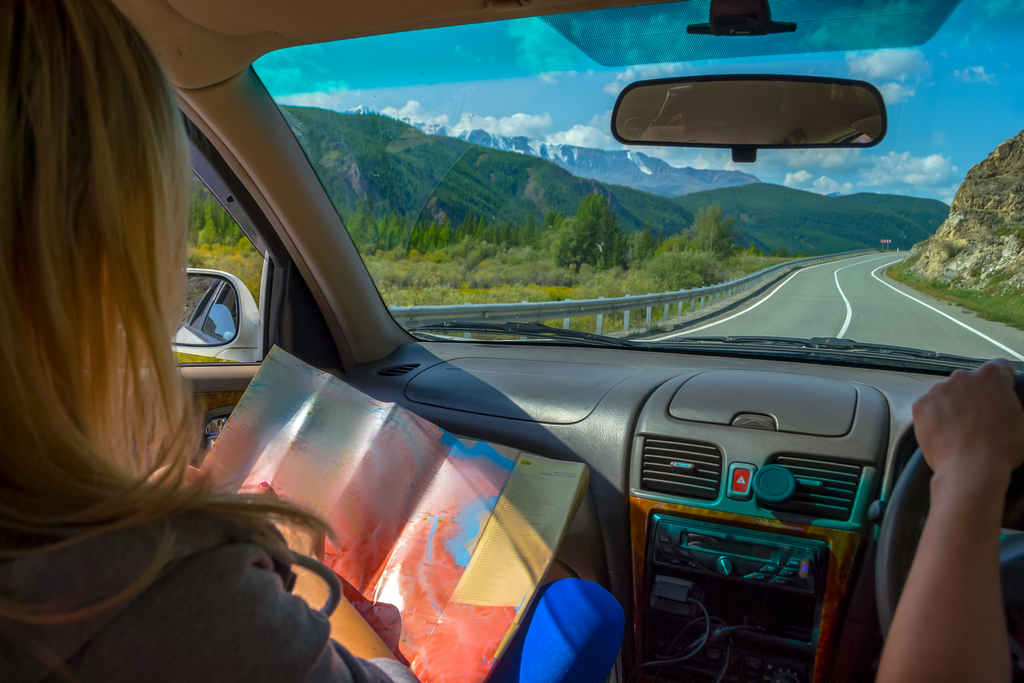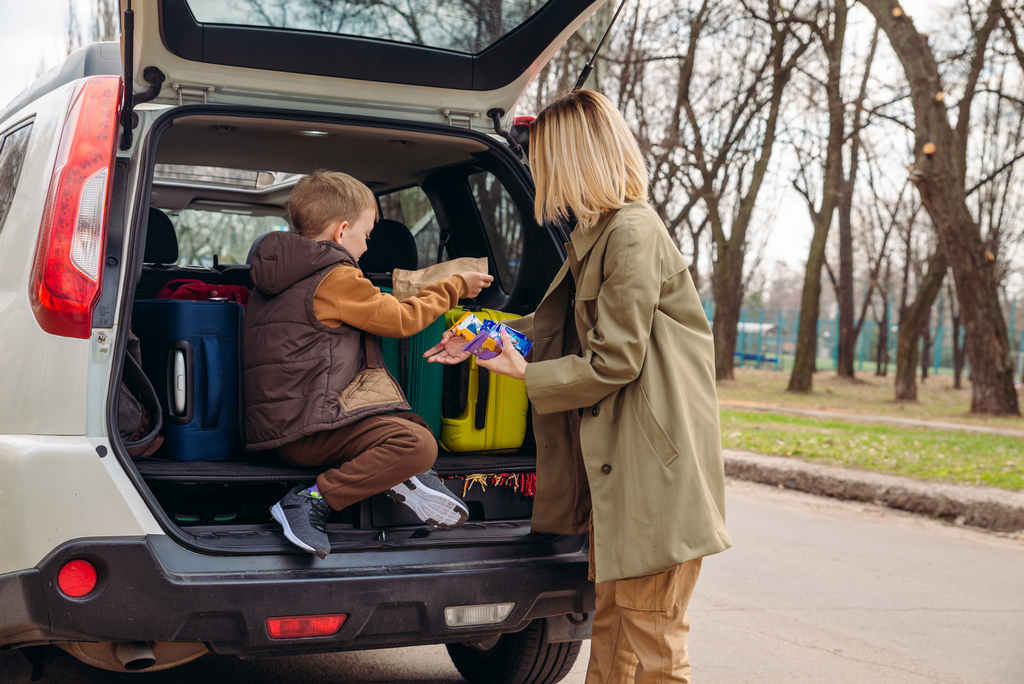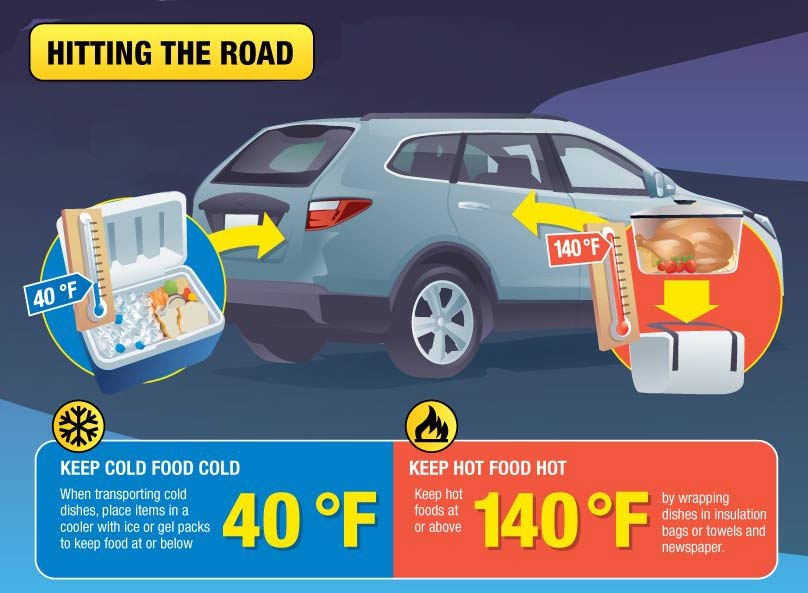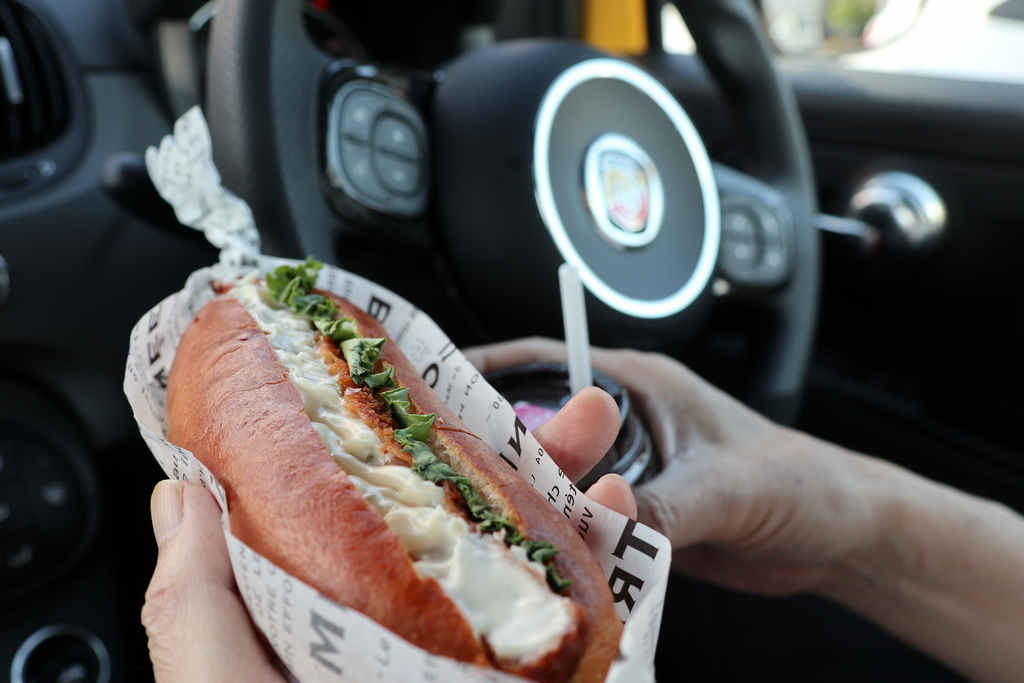Traveling for the holiday weekend? Remember that food safety on the road matters too. The main rule when it comes to food safety while traveling is to keep food out of the temperature danger zone so bacteria cannot multiply to cause food illness. Insulated bags and fully packed coolers make this easier.



Plan Ahead
The first step in food safety is to always plan ahead. You want a happy memorable holiday experience, not one for a food illness.
- Learn about proper hygiene, cross contamination, cold and hot food safety, foodborne pathogens, and best practices to prevent foodborne illness.
- Food Manager Training & ANSI Certification - $99.00
- Food Handler Training - only $7.00!
- HACCP Training: 16hr/4hr/1hr
- Food Allergy Training - $15.00
- Enter Promo "train10off" at Checkout
- Shelf Stable food. “Shelf stable” foods can be safely stored at room temperature. This includes fruitcakes, country hams, and canned cranberry sauce. Be aware that not all canned goods are shelf stable. Some canned food, such as canned ham and seafood, are not safe at room temperature. These will say “Keep Refrigerated” somewhere on the label.
- Perishable Food. Perishable foods are likely to spoil or become unsafe if not kept refrigerated at 40°F (4°C) or below. Examples of perishable foods include meat, poultry, fish, dairy products, and all cooked foods. If you are traveling with perishable foods, place them in a cooler with ice or freezer packs. Have plenty of ice or frozen gel packs on hand before starting to pack the food. If you are bringing perishable foods along to eat while traveling, or to cook at your destination, plan to keep everything on ice in your cooler.
- Cold Food. Pack your cooler directly from the refrigerator or freezer. Meat and poultry may be packed while it is still frozen. This ensures that it stays colder longer (40°F/4°C or below). Also, a full cooler stays colder longer than one that is partially filled. If the cooler is only partially filled, pack the remaining space with more ice or frozen gel packs. Raw meat and poultry should be wrapped separately from cooked foods or ready-to-eat foods, such as fruits or bread. Keep the cooler closed as much as possible, so it stays cold inside. Open the cooler only when necessary, and then open and close the lid quickly.
- Hot Food. If you are traveling with hot food, use an insulated container to help keep it hot. Fill the container with boiling water, let it stand for a few minutes, empty it, and then put in the piping hot food. Keep the insulated container closed to keep the food hot, at 140°F (60°C) or above.



Packing Food for the Car, Bus or RV Trip
- Keep cold food cold. Place cold food in coolers with frozen gel packs or ice. Stashing it at 40°F or below prevents bacterial growth. Meat and poultry may be packed while it is still frozen; in that way it stays colder longer.
- Be sure to keep raw meat and poultry wrapped separately from cooked foods, or foods meant to be eaten raw such as fruits.
- Rinse all fresh produce under running tap water before packing it in a cooler, including produce with peel-away skins or rinds.
- Consider packing beverages in one cooler and perishable foods in another – since you are likely to grab beverages most often.
- Keep hot food hot. That means your best bet when packing is to take a pass on hot food unless you have a portable heating unit that can be safely used.



Food Safety Eating While on the Road
- Remember to wash hands with soap and water during food preparation, especially between tasks.
- If you can’t get to a restroom to wash your hands with soap and water, pack moist towelettes or a hand sanitizer to clean up before digging in.
- Don’t let food sit out unrefrigerated for more than two hours; in hot weather (above 90°F), the time is reduced to one hour.
- In hot weather, transport food in a cooler (packed with ice or ice packs) in the back seat of an air-conditioned car instead of the trunk.
- If you don’t have access to a cooler, try packing frozen juice boxes or bottles of water for a hydrating refresher that will also help keep other foods around them cool.
- If you plan to cook family favorites like hamburgers, hotdogs or chicken breasts at home to take with on your trip, remember to cook to proper temperatures: hamburgers (at least 160°F), hot dogs (reheated to 160°F), and chicken (165°F).
- Consider packing easy-to-transport, shelf-stable foods: single-serve boxes of cereal, trail mix, popcorn, single-serve applesauce, cans of tuna peanut butter sandwiches, fresh fruit, carrots or celery.
- Don’t forget that carry-out and fast-food are also susceptible to food poisoning. Eat fast food within two hours; in hot weather (above 90°F), the time is reduced to one hour.



Summary
When traveling on the road, also keep food safety in mind. Make sure those perishable items are packed with an adequate cold source so that they stay safe the entire trip. Remember, food safety on the road matters too!






